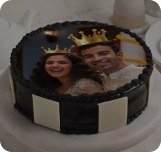About Ganesh Chaturthi
Ganesh Chaturthi is a Hindu festival celebrating the arrival of Ganesh to earth from Kailash Parvat with his mother Goddess Parvati. The festival celebrates Lord Ganesh as the God of New Beginnings and the Remover of Obstacles as well as the god of wisdom and intelligence. The festival is also known as Vinayaka Chaturthi and falls between August 22 and September 20 every year in the Gregorian calendar. The festival of Ganesh Chaturthi starts with the installation of Ganesh clay idols privately in homes and publicly on elaborate pandals by various committees. Furthermore, the celebration of Ganesh Chaturthi usually lasts for 10 days and varies from house to community. Some celebrate this festival for 1 and half days and some celebrate it to the last day.
Celebrations include chanting of Vedic hymns and Hindu texts such as prayers and fasting. Offerings and prasad from the daily prayers that are distributed to the people include sweets such as modaka as it is believed to be a favorite of Lord Ganesh. The festival ends after ten days when the idol is carried in a public procession with music and group chanting, then immersed in a nearby body of water such as a river or sea. In Mumbai, around 150,000 statues are immersed annually. Thereafter, the clay idol dissolves and Ganesh is believed to return to Mount Kailash to Parvati and Shiva.
The Ganesh Chaturthi festival is observed throughout India. Moreover, it is observed especially in the states such as Maharashtra, Goa, Karnataka, Rajasthan, Madhya Pradesh, Andhra Pradesh, Telangana, Odisha, West Bengal, Gujarat, Chhattisgarh, and Tamil Nadu. Ganesh Chaturthi is also observed in Nepal and by the Hindu diaspora elsewhere such as in Australia, New Zealand, Canada, Singapore, Malaysia, Trinidad and Tobago, Guyana, Suriname, other parts of the Caribbean, Fiji, Mauritius, South Africa, United States, and Europe.
History Of Ganesh Chaturthi Celebration
It is unknown when or how Ganesh Chaturthi was first observed. The festival of Ganesh Chaturthi has been publicly celebrated in Pune since the era of Shivaji, who was the founder of the Maratha Empire. The Peshwa rulers in the 18th century were devotees of Lord Ganesh and started a public Ganesh festival in their capital city of Pune during the month of Bhadrapada. After the start of the British Raj, the Ganesh festival lost state patronage and became a private family celebration in Maharashtra until its revival by Indian freedom fighter and social reformer Lokmanya Tilak.
According to communities such as Kaur, the festival became a public event later in 1892. That time, Bhausaheb Laxman Javale (also known as Bhau Rangari) installed the first public Ganesh idol in Pune. After that, in 1893, Lokmanya Tilak praised the celebration of the public Ganesh Utsav in his newspaper Kesari and dedicated his efforts to launch the annual domestic festival into a large, well-organized public event. According to Robert Brown, Lokmanya Tilak chose Ganesh as the god that bridged the gap between Brahmins and non-Brahmins.
Other scholars state that after 1870 the British Empire had passed a series of ordinances that banned public assembly for social and political purposes of more than 20 people in British India. But, they exempted religious assembly for Friday mosque prayers under pressure from the Indian Muslim community. Tilak leveraged this religious exemption to make the Ganesh Chaturthi celebration avoid the British colonial law on large public assembly. He was the first to install large public images of Ganesh in pavilions in the Bombay Presidency and other celebratory events at the festival.
In Goa, Ganesh Chaturthi existed earlier than the Kadamba era. The Goa Inquisition had banned all Hindu festivals and they restricted the Hindus who did not convert to Christianity. However, Hindu Goans continued to practice their religion despite the restrictions. Many families worship Ganesh in the form of patri (leaves), a picture is drawn on paper or small silver idols. In some households, Ganesh idols are hidden due to a ban on clay Ganesh idols and festivals.
Preparations And Celebrations Of Ganesh Chaturthi In India
In preparation for the Ganesh Chaturthi festival, various artisans create clay models of Ganesh for sale. The Murti's range in size from 3⁄4 inch (1.9 cm) for homes to over 70 ft (21 m) for large community celebrations.
The public preparations for the Ganesh festivities begin months in advance. Funds for local Mandapa or Pandals are usually collected from local residents. Furthermore, it may also be hosted by businesses or community organizations. The making of the Murti (Ganesh Idol) in Maharashtra usually begins with Padya pooja or worshipping the feet of Lord Ganesh. The Murti's are brought to the pandals on the day or a day before the festival begins. Also, the pandals are decorated with flowers, lighting, and various other decorations.
At home, the festival preparation begins with purchases of puja items and accessories a few days in advance. Moreover, people book the Ganesh idols as early as a month beforehand. The Ganesh idol is brought home either a day before or on the day of the Ganesh Chaturthi itself. Families clean a small portion of their house and decorate it with flowers and other colorful items before installing the idol. The Ganesh idol and the portion where it is placed, are decorated with flowers and other materials. Furthermore, on the day of the festival, the ceremonial installation of the Ganesh idol is done along with chants of holy mantras and pooja including bhajans during a certain auspicious period of the day.
The date for the festival is usually decided by the presence of Chaturthi Tithi. If the Chaturthi Tithi begins at night on the previous day and gets over by morning on the next day, then the next day is observed as Vinayaka Chaturthi. In the installation ceremony, a priest performs a Prana Pratishtha to invite Ganesh as a guest. This is followed by the 16-step Shodashopachara ritual, during which coconut, jaggery, modaks, durva grass, and red hibiscus flowers are offered to the idol. Depending on the region and time zone, the ceremony commences with hymns from the Rigveda, the Ganapati Atharvashirsa, the Upanishads, and the Ganesh Stotra (prayer) from the Narada Purana are chanted. In Maharashtra as well as Goa, Aartis are performed with friends and family, typically in the morning and evening.
Ending (Visarjan) of Ganesh Chaturthi Festival
The tradition of Ganesh Visarjan takes place on the last day of the Ganesh Chaturthi festival. The last day of the 10-day festival is also popularly known as Anant Chaturdashi. The word Visarjan implies that on this day the idol of Lord Ganapati immerses in a river, sea, or water body. Moreover, on this last day, the devotees come out in processions carrying the Ganesha idols and perform immersion. There is an interesting story behind the Visarjan of the Ganesh idol. It is believed that Lord Ganesha returns to Mount Kailash to join his parents Lord Shiva and Goddess Parvati on the last day of the festival. The celebration of the Ganesh Chaturthi festival also denotes the significance of the cycle of birth, life, and death. Ganesha, who is also known as the Lord of New Beginnings, is also worshipped as the Remover of Obstacles. It is believed that when the idol of the Ganesha is taken out for immersion, it also takes away all the obstacles of the house with it and these obstacles are destroyed along with the Visarjan.

















